Score breakdown
Things we like
- Lovely to drive
- Great to look at
- Upgraded media system is excellent
- Textile interior is cool
Not so much
- Pricey, with some extortionate options
- Charging cable costs $400 extra
- A little thirsty
- Rare but nobody cares
If I was Jaguar, I’d be furious. The first “legacy” carmaker to get a genuinely nice and fast electric car to market in an attempt to spoil Tesla’s party, and it has not been the wild success the company had hoped for.
Jaguar even made the I-Pace an SUV rather than one of its signature sports cars or luxury sedans to pander to market tastes. But in 2022 in Australia it was swamped by pretty much every other premium manufacturer, hampered by supply struggles and a general slide in Jaguar’s local fortunes.
I am mystified as to how the Jaguar is so hugely underrated. Given I hadn’t driven one since launch – and there have been plenty of electrons under my right foot since – it was time to go back to the I-Pace to see what gives.
Updated model announced
Unfortunately, we were booked into this I-Pace without knowing that a significant MY24 update was on the way. This review will still be useful for buyers, but you should note that Australian pricing and specs for the MY24 car have been announced here. We’ll deliver a review of the updated model when it lands in July.
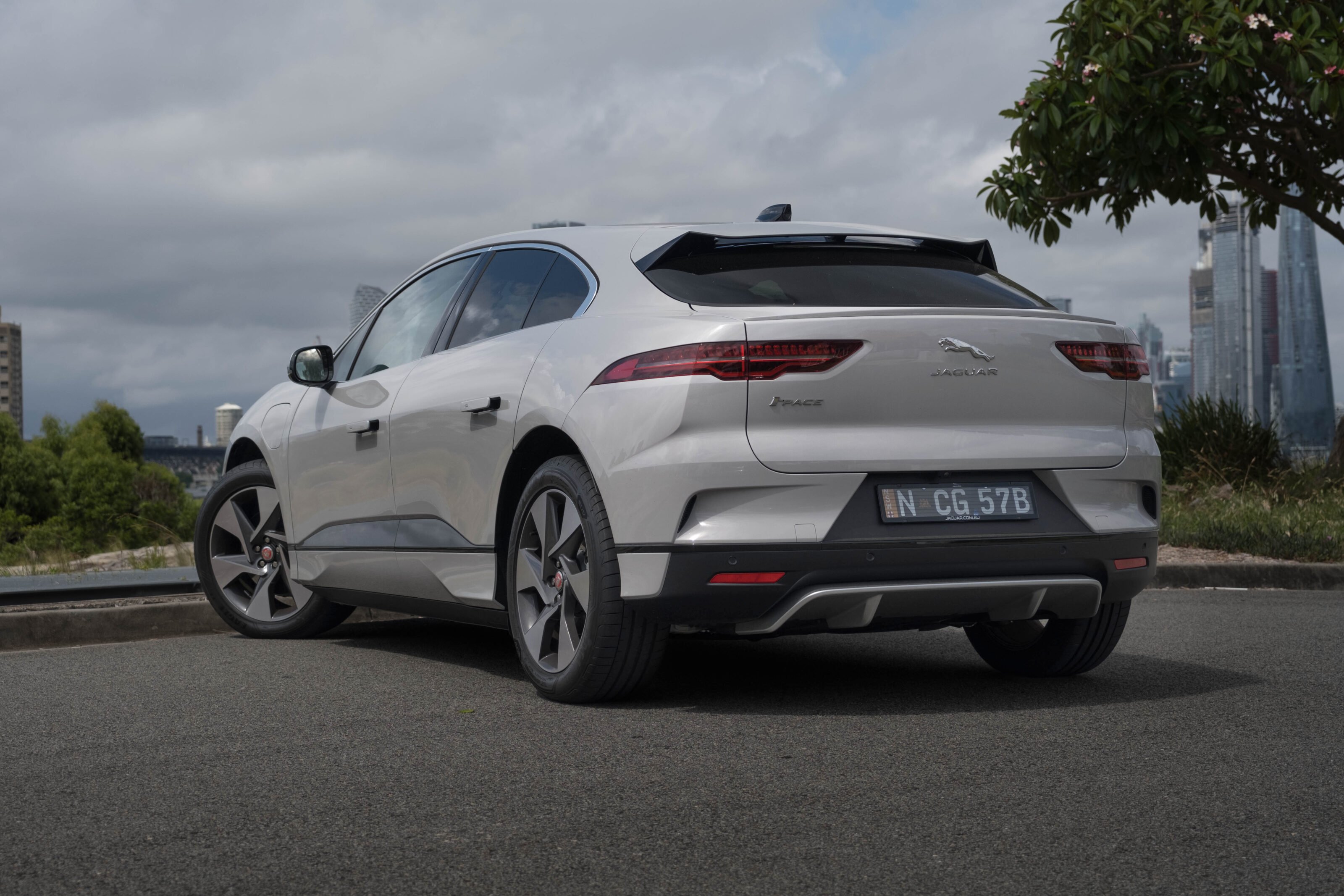
JUMP AHEAD
- How much is it, and what do you get?
- How do rivals compare on value?
- Interior comfort, space and storage
- Battery and charging
- What is it like to drive?
- How is it on electricity?
- How safe is it?
- Warranty and running costs
- VERDICT
- Specifications
How much is it, and what do you get?
The first clue might be the price. When the car launched it was in 2018 it started at $119,000.
Back then you could have that or a Tesla Model X, a far larger and more expensive car. So the number of competitors has certainly risen, but as you’ll see later in this review, it’s not out of the ballpark.
For 2023, you’ll be starting at $146,857 before on-road costs for the SE EV400, Jag’s entry-level and so far only EV. There used to be a cheaper S specification, but that’s a goner now but you can step up to the HSE with more standard kit and both offer an R-Dynamic black pack option.
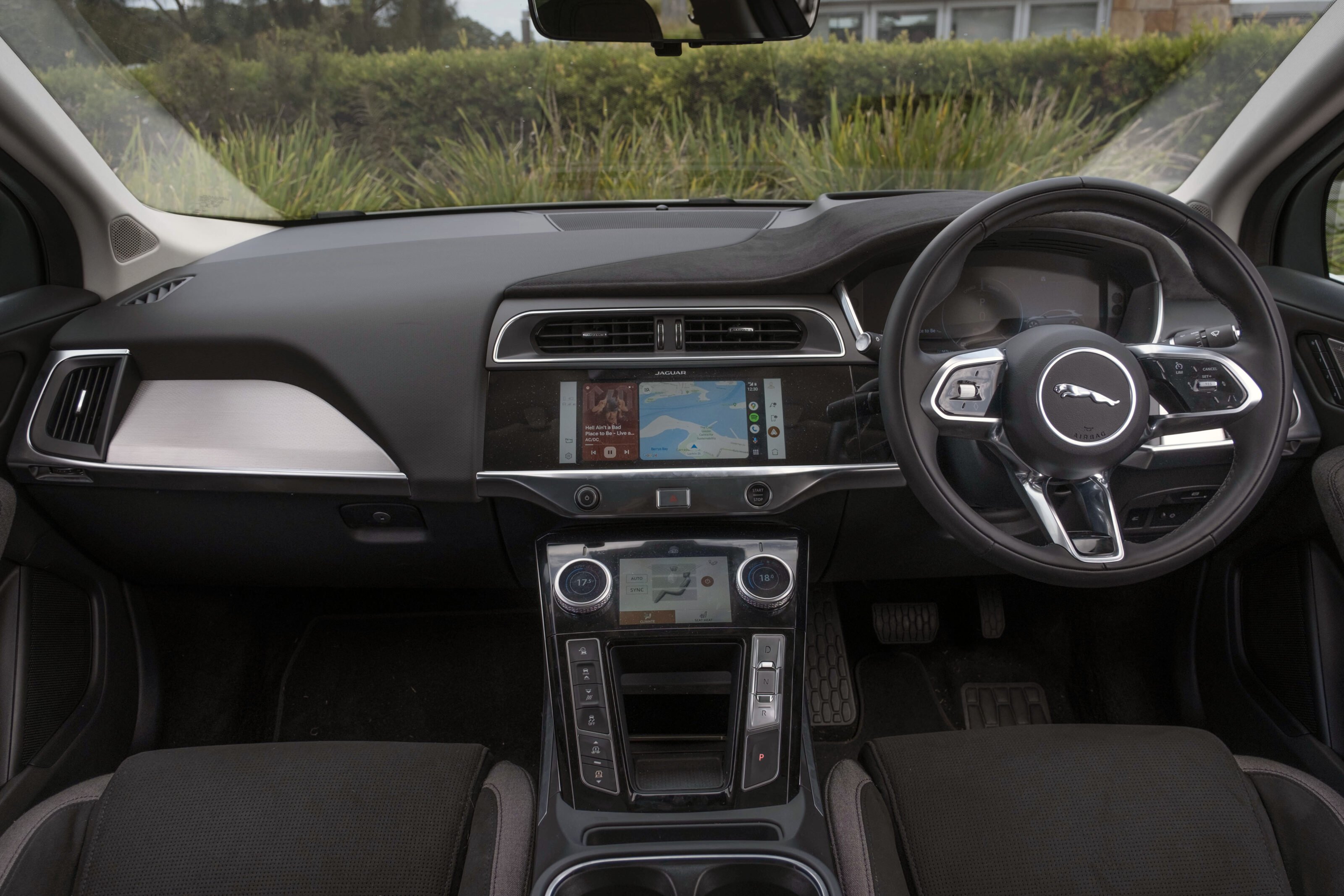
| 2023 Jaguar I-Pace SE standard features | |
|---|---|
| 10-inch touchscreen | Dual-zone climate control |
| 20-inch alloy wheels | Electric heated and folding mirrors |
| 6-speaker stereo | Front and rear parking sensors |
| Adaptive cruise control | Keyless entry and start |
| Auto LED headlights | Reversing camera |
| Auto parking | Satellite navigation |
| Auto wipers | Textile interior |
| DAB+ digital radio | Wireless Android Auto |
| Digital dashboard | Wireless Apple CarPlay |
Jaguar has replaced the original car’s media system with the vastly improved Pivi Pro. While the 10-inch hardware is still a little on the slow side, it’s a big improvement and much easier to use and look at.
As it’s a Jaguar, there is a long list of options available. The car tested here had the fixed panoramic glass roof ($3580), power-adjustable heated and cooled front seats ($3270), adaptive dynamics ($2405), monogram aluminium trim finisher ($1521), Meridian sound system ($1200), camera-based rear vision mirror ($1131), head-up display ($1040), privacy glass ($845), 40:20:40 split-fold rear seats with centre armrest ($620), spoiler ($410), and a home charging cable(!)($400). All of this took the price to $163,279 before on-road costs.

You could lose a lot of this stuff and not be too worried. The seats seem a bit stiffly priced to me and you can’t ever sell me on a sunroof. But the adaptive dynamics pack adds air suspension (good), and head-up displays are always good but to charge for a home charging cable seems a mite cheeky. Scratch that, mighty cheeky.
Cheekier still are the $3900 paint colours, but I’ll let Jaguar off because there are only two of them and the rest of the palette is free, with ten further colours to choose from, no less.
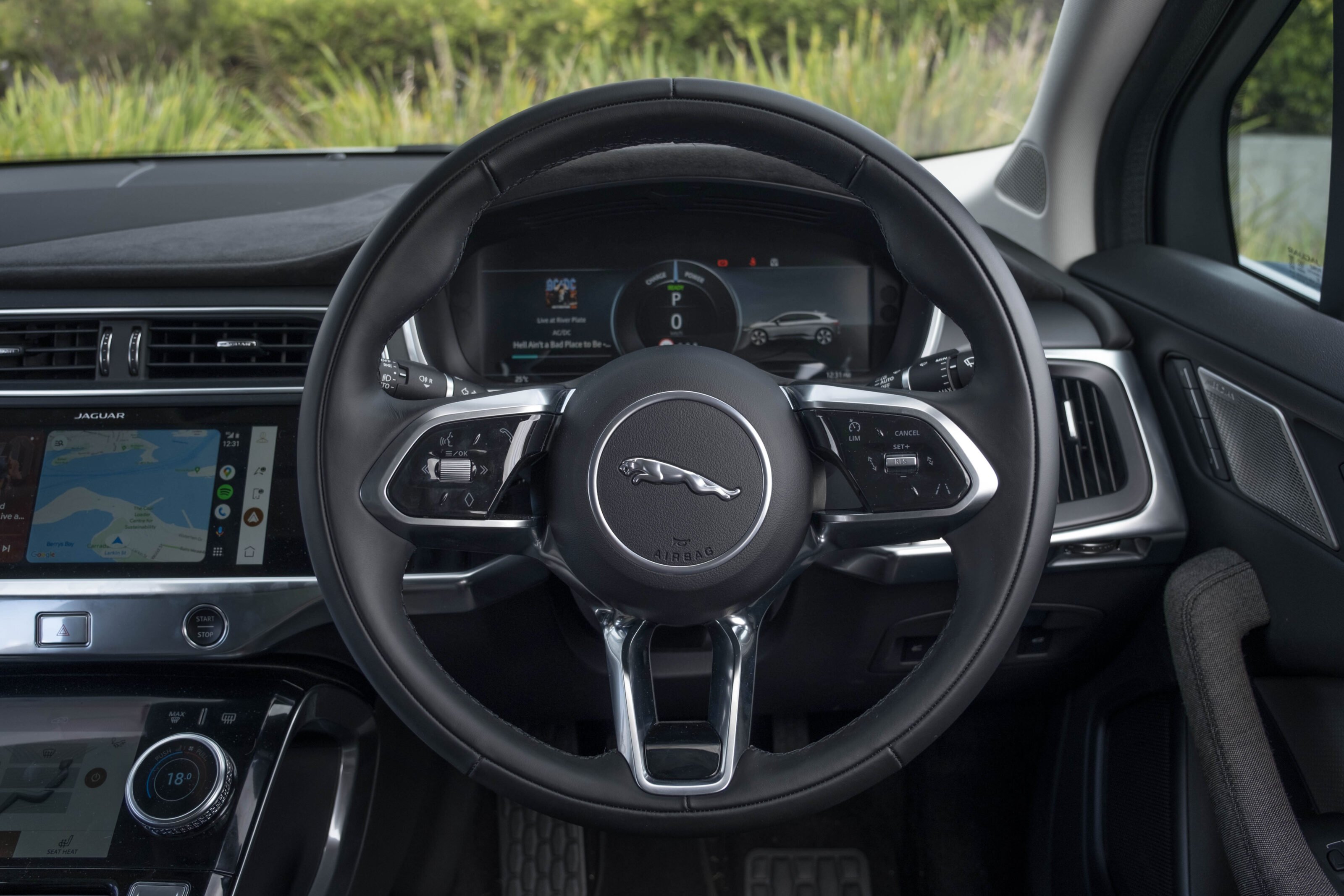
How do rivals compare on value?
There is a lot going on in this space. It’s kind of hard to pigeonhole the Jag as it’s more of a crossover than an SUV, so there are plenty of rivals.
BMW’s iX3 is a comparative snip at $104,000 before on-road costs. It now has the warranty you deserve and roughly matches the range aspirations of the Jag but is much more of a high-riding, practical SUV, albeit based on an ICE platform. It comes with a five-year Chargefox subscription, too, which is great if you live or work near an operational charger. Hello to that one person.
Tesla’s more suitably-sized Model Y (as opposed to the seemingly unobtainable X) starts at about half the price but doesn’t have anything like the poise, power or features (like a proper speedo). The Model Y Performance at around the $100K mark plus on-road costs is more like it, but isn’t as good to drive, though it has similar power and torque.
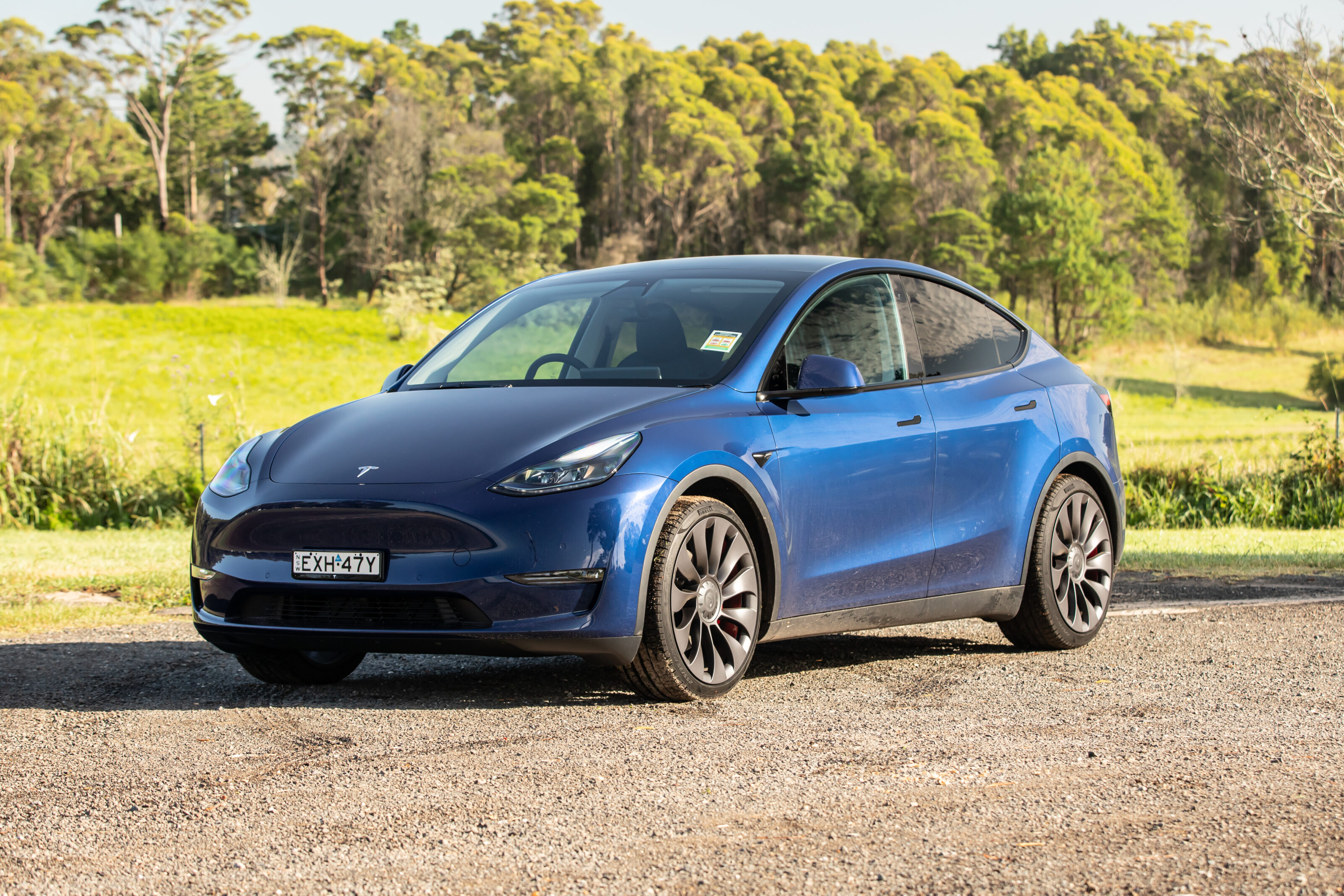
Kia’s EV6 GT is a recent arrival and I’m probably pushing my luck, but it’s tempting. With a scorching 3.8-second run to 100km/h, 800-volt charging and a longer vehicle warranty, it is priced from $99,950 before on-road costs. Doesn’t quite have the badge, though, does it?
Audi’s E-Tron, soon to be revised and renamed Q8 E-Tron, starts at $132,980 for entry 55 SUV and heads up to $153,500 for the E-Tron S (both before on-road costs), which is probably a closer match to the I-Pace.
Like the iX3, it’s not built on a dedicated EV platform and isn’t quite as much fun to drive as the Jag, nor does it hit the numbers on battery range. Luckily it comes with six years of free charging at Chargefox. I don’t have another joke about broken chargers.
Interior comfort, space and storage
The I-Pace isn’t a big car but it’s quite roomy. Dedicated EV platforms tend to have long wheelbases, meaning the cabin has more room to breathe even if the car itself isn’t super long.
Being a Jag, you sit low in the cabin, with a great view out over the stubby nose. The lovely dished steering wheel, familiar from so many other Jaguars, frames the clear and simple digital dashboard that also seems better than the earlier cars.
This car had a fabric interior. I reckon it looked and felt great and is well-paired with the full glass sunroof. While I felt that the roof was darker than the last I-Pace I drove – and therefore the cabin didn’t heat up so much – not having to keep an egg flip handy to remove skin from upholstery was quite nice.
It was nice to see lovely fabric trim on a car that normally comes with leather and doesn’t have to. Jaguar Land Rover does a really good job with fabrics and I am a fan of cloth interiors.
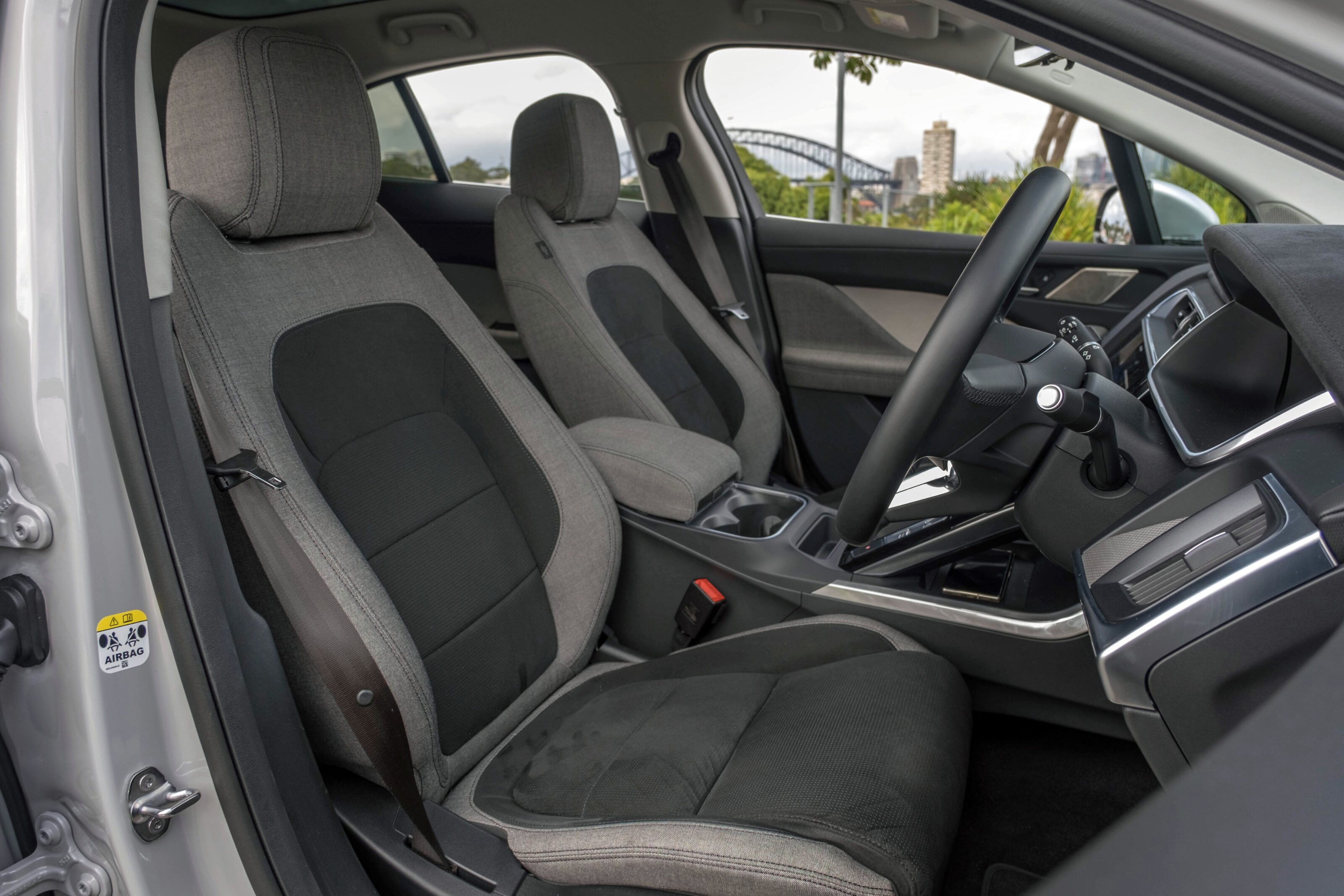
The front seats are very comfortable and took us on our five-hour round trip to the Blue Mountains and back in plenty of comfort. There are two cup holders, an awkward-to-get-to wireless phone charger and USB ports (A and C). There isn’t an embarrassment of storage; the sports car vibe of the cabin just isn’t built that way.
It is also quite comfortable for two in the rear seats, and not too bad for three. The I-Pace is pretty wide, so as much is made of the space as possible. The fold-down armrest has a pair of cup holders, you get air vents, door pockets and two USB ports for charging as well as a 12-volt outlet.
The boot provides a massive 656 litres of space and it is well-shaped for bulky items. The tailgate lifts out of the way, too, with a helpfully wide aperture. A tiny 27-litre front boot under the bonnet just – just – swallows the charge cables. But it keeps them out of the way, so that’ll do.

Battery & Charging
The I-Pace packs a 90kW lithium-ion battery packed into the floor.
You can tell the Jag is getting on a bit with its headline DC charging rate of just 100kW. As I will always say, on most chargers that’s academic because when you get there it’s either broken or won’t give you the full promised rate of delivery.
We struggled a bit with charging the I-Pace – the Ampol charger in Sydney gave us just 25kW (rated to 180kW) while the Chargefox Eveleigh 50kW charger faulted after nine minutes, delivering at a maximum of 30kW.
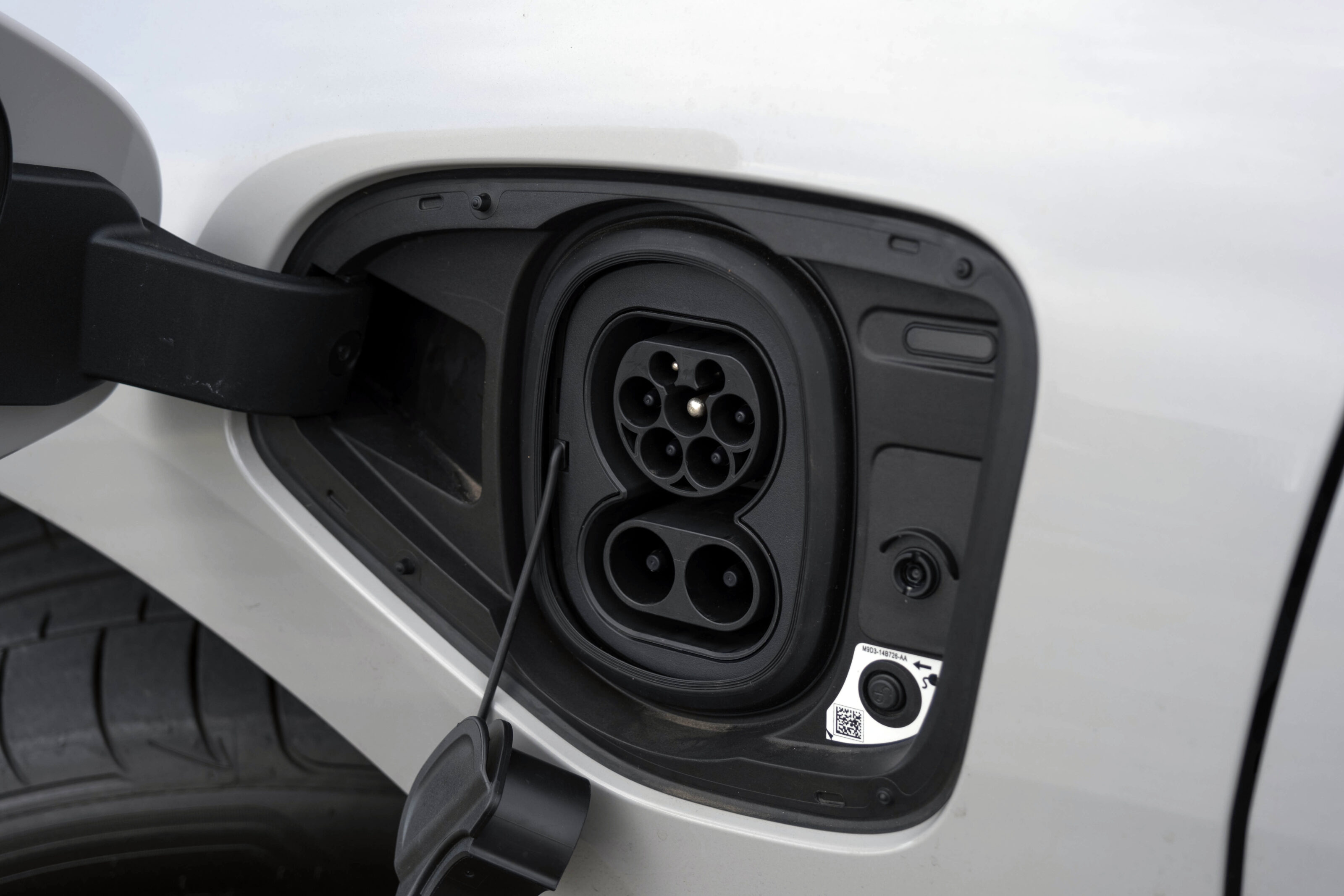
We drove home and then trundled to a nearby Bunnings which we thought had a row of 22kW chargers. Sadly, it now just has one ARENA-funded 50kW CCS2/25kW CHAdeMo charger, a familiar unit that is half useless most of the time because so few cars have the CHAdeMo plug.
Anyway, we plugged into this Exploren-branded charger and got 50kW flowing from 27 per cent all the way to 80 per cent. This is the stuff. 50kW – if you can get it – is reasonably swift charging and is fine for a leisurely coffee stop or, as the Exploren’s situation implies, a wander through the hardware Narnia that is Bunnings.
Three straight weeks of running EVs leads me to believe that while 350kW charging is all well and good, most of us will be happy with 50kW unless we’re in a screaming hurry or that jerk ahead of us has been idling for over an hour. Or, like the dimwit in the Tesla who insisted that once reaching 100 per cent, it needed another 20 minutes to complete the charge for “that extra little bit”.
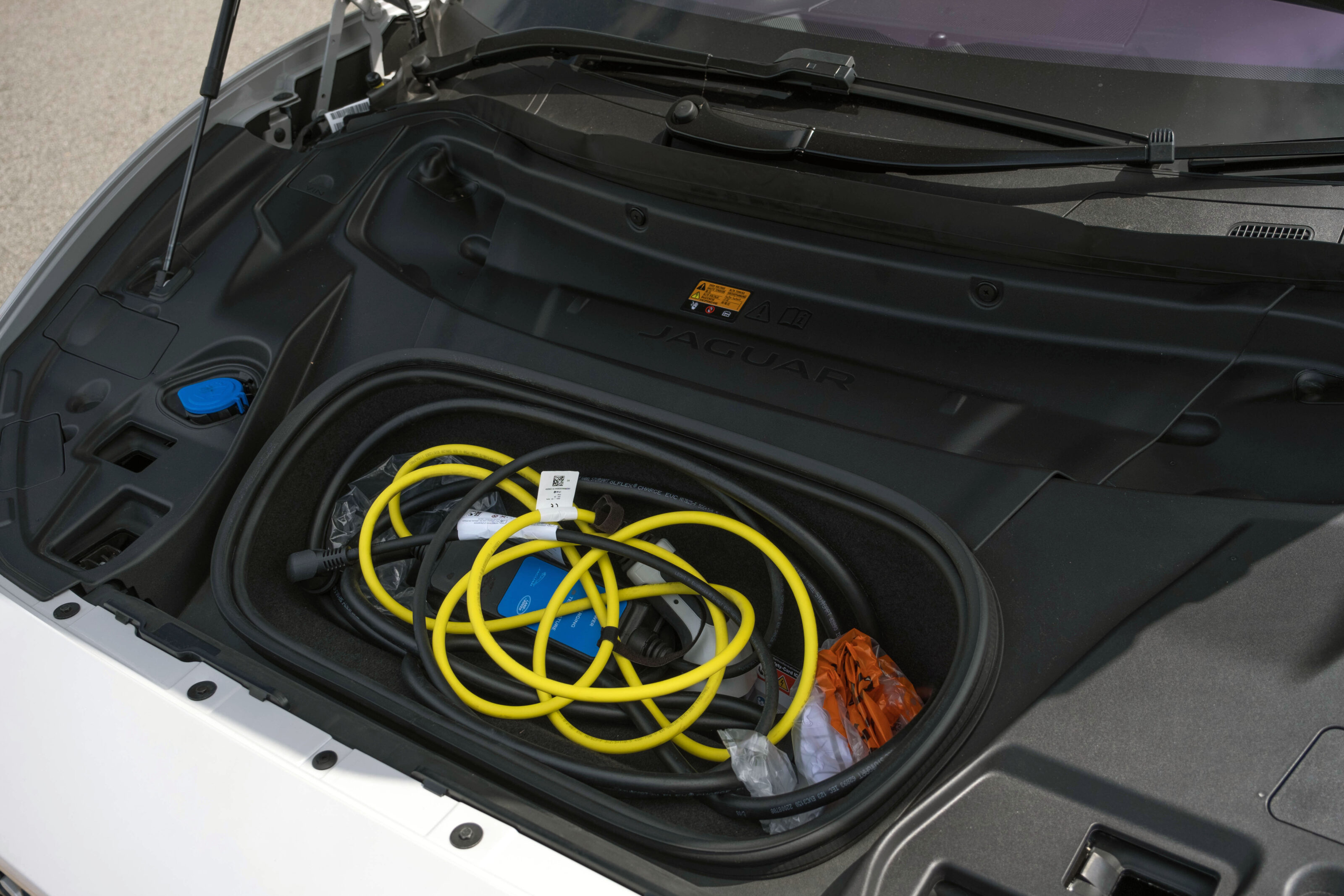
What is it like to drive?
I was a big fan of the I-Pace on launch and remain so to this day, because it really is a lovely car to drive.
Yes, I can go all gooey about how Jaguars have always been nice to drive – and they are – but this is an electric Jag. There wasn’t one before and this remains the brand’s sole battery electric car. So much could have gone wrong.
Most other car companies kind of dipped their toes in EVs and very, very few left the factory with a convincing ride and handling combination. Tesla pulled its lets-go-really-fast-toward-the-scenery stunt exceptionally well, making sure converts didn’t really notice that, actually, the ride wasn’t all that flash with or without air suspension and, also, they didn’t really corner that well.
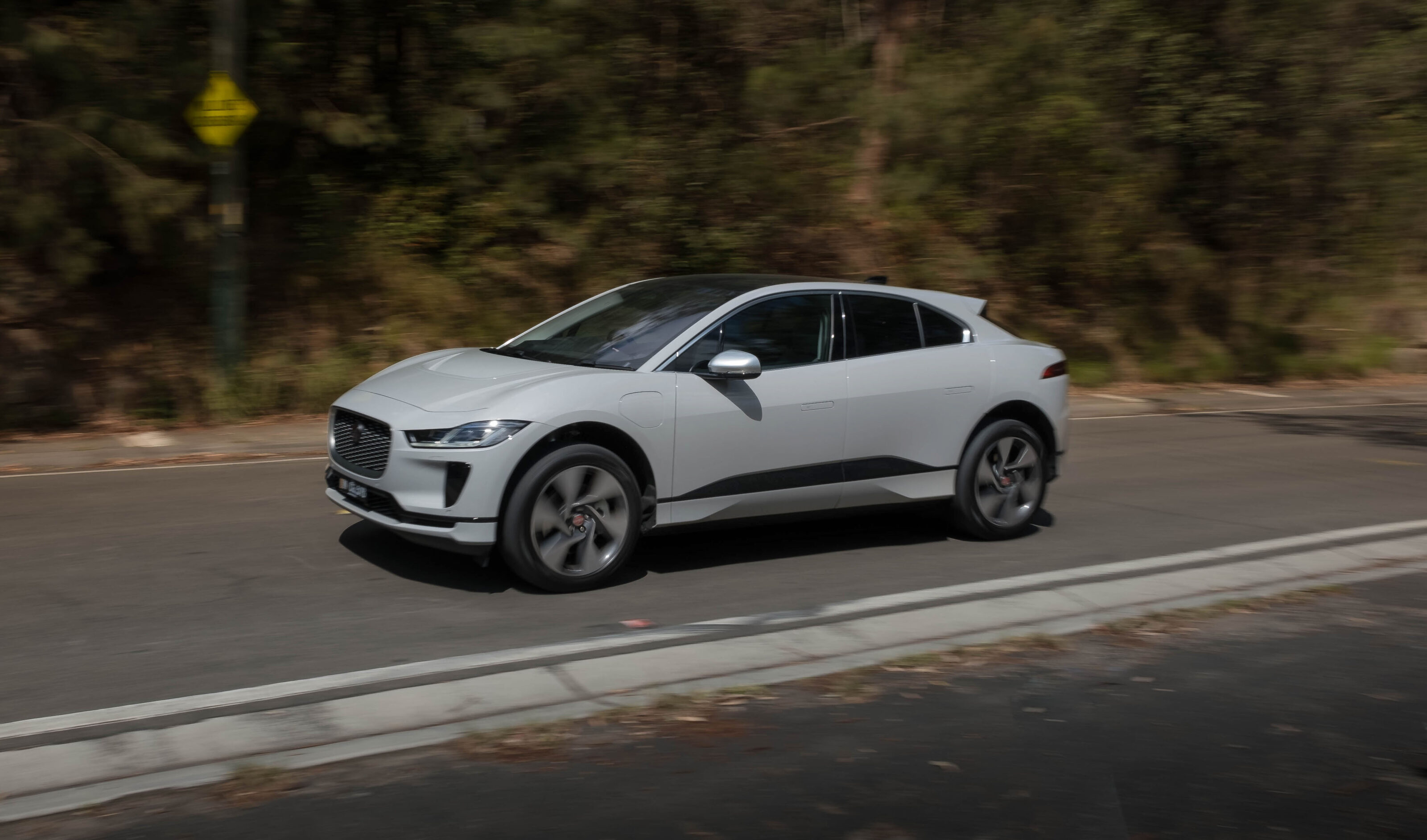
The Jag’s arrival in 2019 told us that you can get it right, reining in the weight, rolling on big wheels and still having some big cat DNA.
Obviously, it’s quick. Just under five seconds to 100km/h, which it does quietly and very smoothly. It doesn’t snap your neck on a mashed throttle but nor does it try and wander all over the road while you’re doing it, such is the even application of power and torque across the four wheels.
While I haven’t tried an I-Pace without the air suspension, I reckon you’d be mad not to. Not only does it mean the car can raise and lower itself depending on drive modes but it makes sure you never feel like you’re on 50-profile tyres. Rear-seat passengers might notice it but up front, it’s all serenity, no matter which mode you choose.
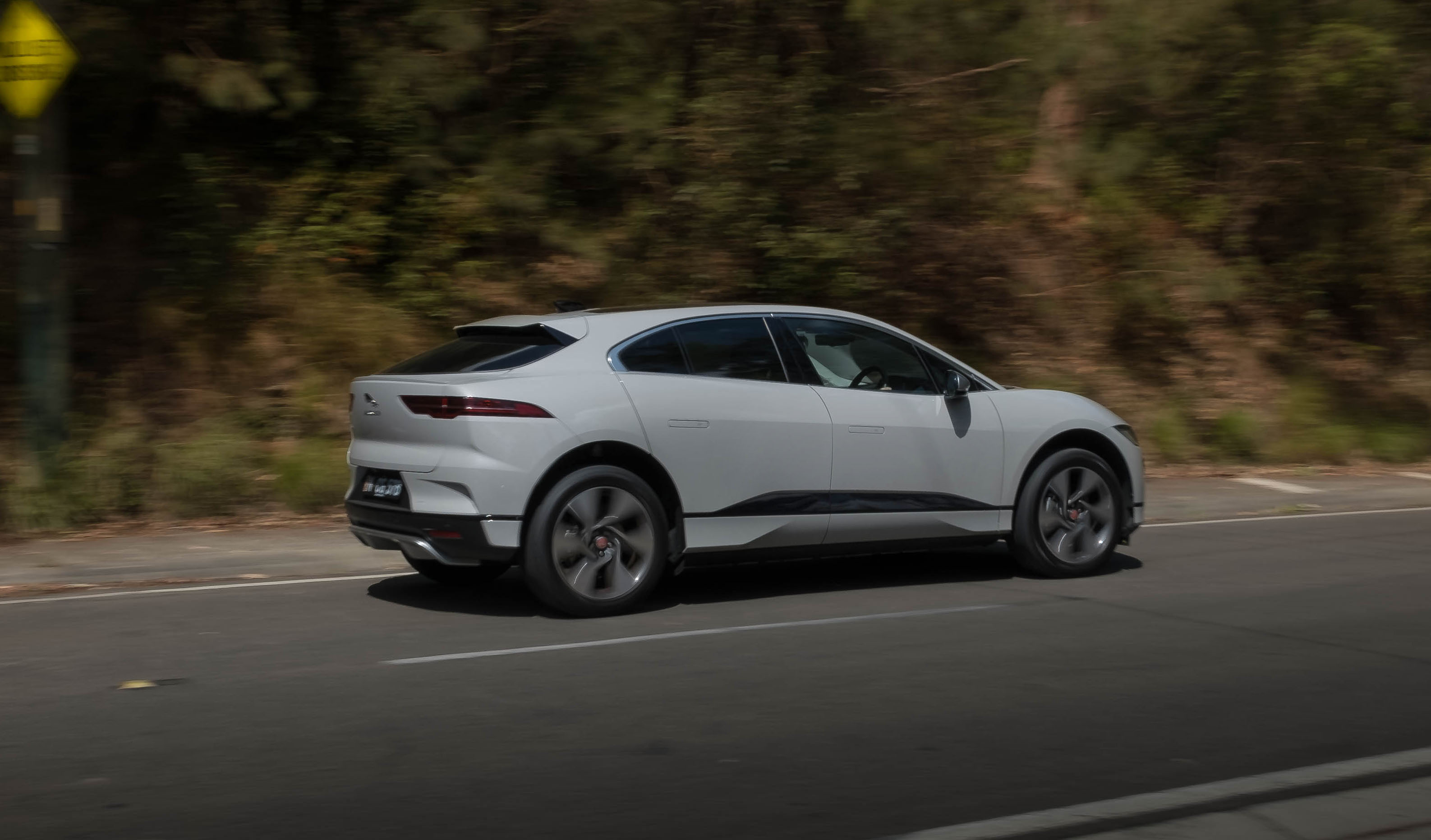
The steering weight is well-judged in each of the modes, too, never trying to trick you into thinking there is steering feel with too much weight. It’s classier than that.
Drawbacks? It’s a little hard to see out of the rear window so the camera-based rear vision mirror – while initially unnerving – is quite good. I’d like a bit more storage in the otherwise lovely cabin but it’s otherwise a tricky car to fault from the driver’s seat. Apart from the turning circle, which is a bit lazy but that’s what you get for big wheels.
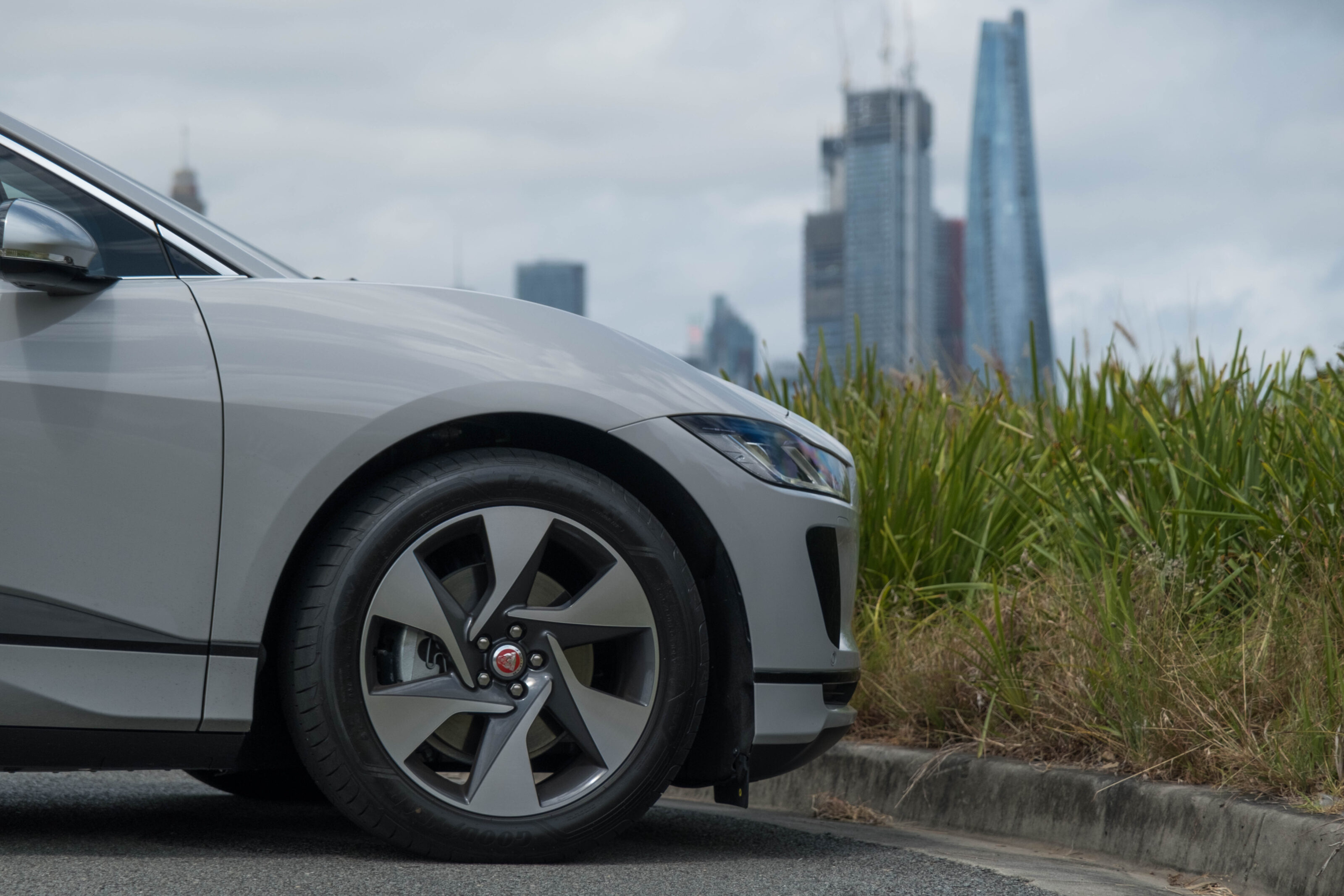
How is it on electricity?
The I-Pace’s official combined-cycle figure (WLTP) has gone up since its 2018 launch, now weighing in at 449km, which is remarkably close to the NEDC findings. They can occasionally be on the generous side.
| 2023 Jaguar I-Pace SE energy consumption | |
|---|---|
| Energy consumption (WLTP, claimed) | 23.0kWh/100km |
| Energy consumption on test | 22.1kWh/100km |
| Claimed range | 449km |
| Estimated real world range | 391km |

In our hands, the I-Pace had a pretty even mix of fast highway running and suburban bombing. Across several charging sessions, we never saw better than a projected range of 391km but that was pretty accurate.
After two weeks, our average consumption was 22.1kW/100km which is a little on the high side for such a low and aerodynamic machine, so one imagines the drivetrain hasn’t had a lot of attention since launch. But I did beat the WLTP energy consumption figure without even trying.

How safe is it?
The I-Pace scored a five-star ANCAP safety in 2019.
Its forward auto emergency braking works at both high and low speeds. The only obvious omission here is reverse AEB, something many of its direct rivals have.
There are two ISOFIX points and three top-tether points for child seats in the back.
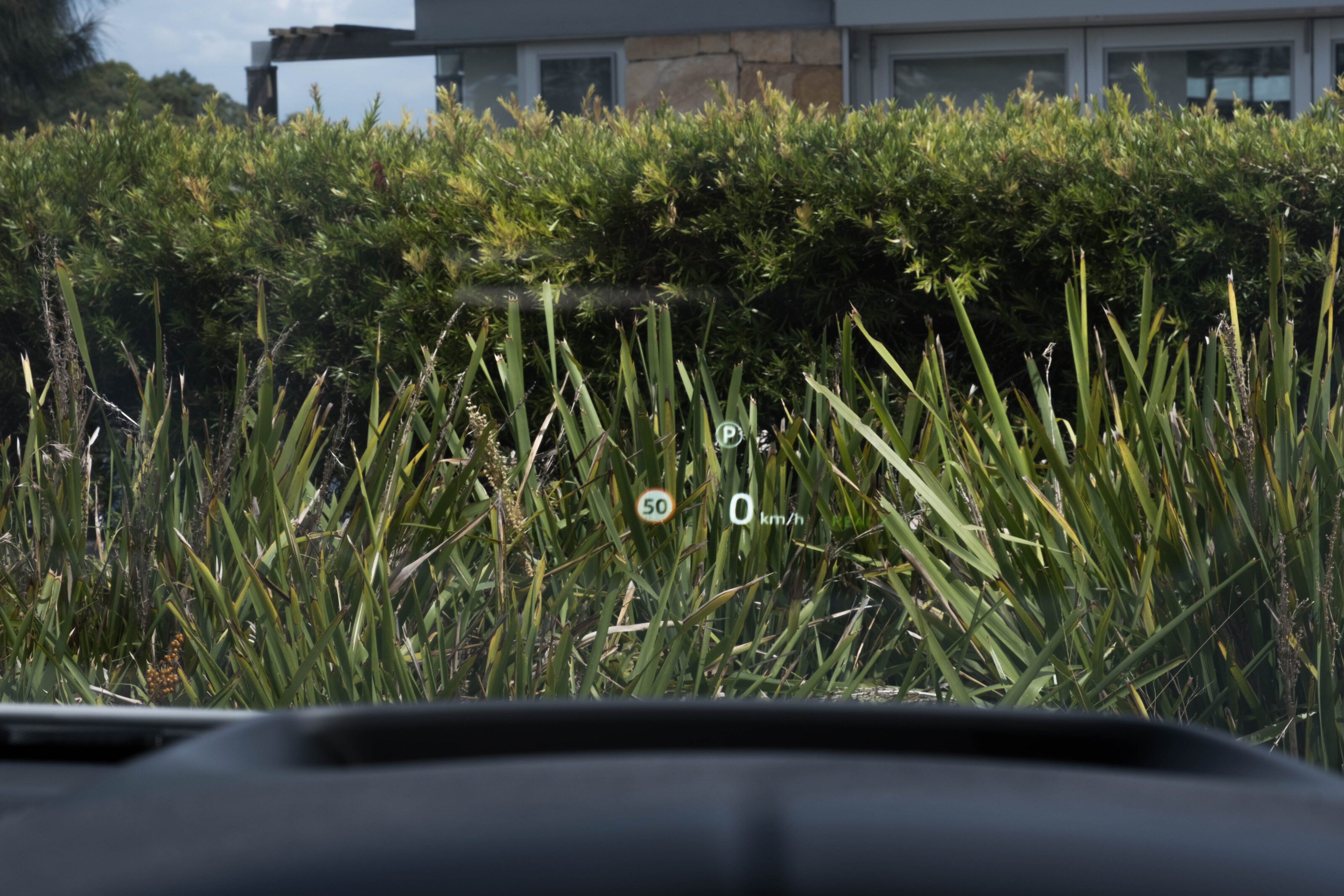
Warranty and running costs
Jaguar offers a five-year, unlimited-kilometre warranty and offers roadside assistance for the duration. Strong start.
The company then throws in five years or 130,000km of scheduled servicing, meaning a striking 12-month/26,000km service interval. Yeah, 12 months is normal but 26,000km is not (Tesla excepted and no I don’t think not having anyone regularly look at your two-tonne EV is a good idea).
You also get an eight-year/160,000km battery warranty which protects you against the battery falling to less than 70 per cent of its as-new capacity within that timeframe.
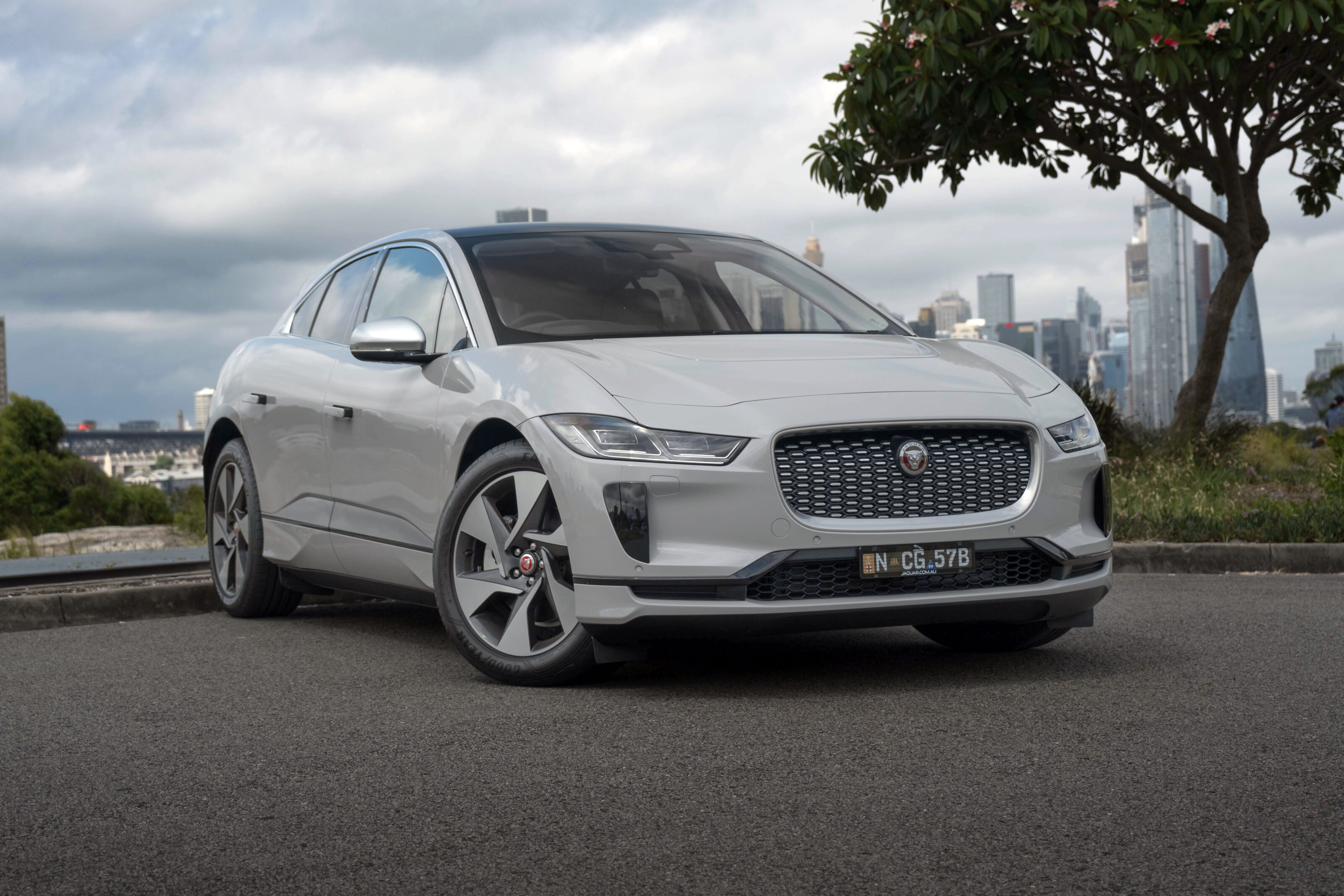
VERDICT
Is the I-Pace underrated? Definitely. After nearly five years on sale around the world, it’s still a very good EV in an appealing package.
The prices may have gone up, but so have everyone else’s and few look this good. I think the I-Pace is individualistic without going overboard and with news of a 2024 facelift restricted to a few little visual tweaks, it seems customers agree.
Problem is, the I-Pace is dealing with a rapidly changing environment and while a lot of the things on other cars (say, 800-volt charging) make for good headlines without (yet) translating into real-world benefit, people are drawn to that kind of thing. It’s fundamentally the same car it was at launch and the stuff that wasn’t good back then is better now.
So I remain mystified how more people don’t line up for one. I guess there’s no accounting for taste.
Updated model announced
Unfortunately, we were booked into this I-Pace without knowing that a significant MY24 update was on the way. This review will still be useful for buyers, but you should note that Australian pricing and specs for the MY24 car have been announced here. We’ll deliver a review of the updated model when it lands in July.
| 2023 Jaguar I-Pace SE specifications | |
|---|---|
| Body | 5-door, 5-seat large SUV |
| Drive | all-wheel |
| Engine | twin permanent magnet synchronous electric motors |
| Transmission | single-speed reduction gear |
| Power (front) | 147kW |
| Power (rear) | 147kW |
| Combined power | 294kW |
| Torque (front) | 350Nm |
| Torque (rear) | 350Nm |
| Combined torque | 696Nm |
| Battery | 90kWh lithium-ion (84.7kWh useable) |
| AC charging | 7kW (12.5hrs to full) |
| DC Charging | 400-volt, 100kW |
| 0-100km/h | 4.8 seconds |
| Range (WLTP) | 449km |
| Energy consumption | 22kWh/100km |
| Weight | 2133kg |
| Suspension | double wishbone front / multi-link rear |
| L/W/H | 4682mm/2139mm/1565mm |
| Wheelbase | 2990mm |
| Tyres | 255/50 R20 |
| Wheels | 20-inch alloy (no spare) |
| Price | $146,857 + on-road costs |
Score breakdown
Things we like
- Lovely to drive
- Great to look at
- Upgraded media system is excellent
- Textile interior is cool
Not so much
- Pricey, with some extortionate options
- Charging cable costs $400 extra
- A little thirsty
- Rare but nobody cares
We recommend
-
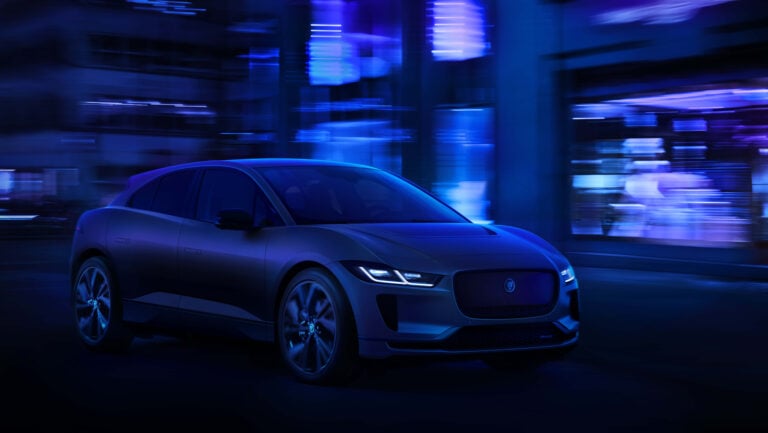 News
News2024 Jaguar I-Pace pricing and features
The I-Pace has gained another subtle update to keep it fresh among the growing sea of luxury EVs, and will launch in Australia from July with a price bump
-
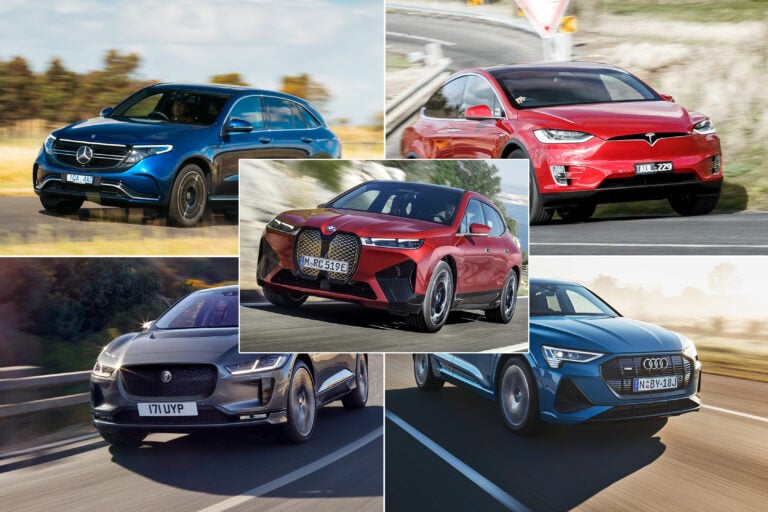 Comparisons
Comparisons2022 BMW iX vs Tesla Model X vs Mercedes EQC vs Audi E-Tron vs Jaguar i-Pace: Spec comparison
We compare BMW's upcoming iX electric SUV against major rivals from Tesla, Mercedes-Benz, Audi and Jaguar. Before we can drive them all together, here's how they line up.
-
 News
NewsNew car calendar 2026: All the new cars coming to Australia next year
Here’s the WhichCar by Wheels guide to all the new cars that will launch in Australia in 2026. Check back in regularly for updates...






